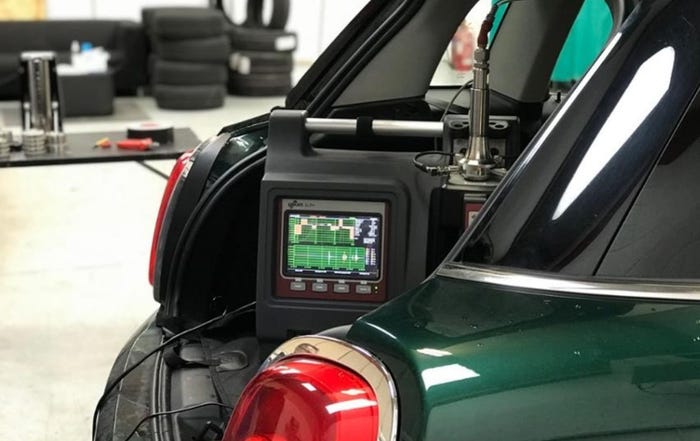Ford Wrestles With Torsional Excitations
DOWNSIZING AN ENGINE AND INTEGRATING turbocharging is a compelling powertrain strategy, but one that creates as many challenges as it solves. For instance, a boosted engine increases inertia, which means higher torsional excitations, says Steven Thomas, manager-global transmission and driveline, advanced engineering at Ford. The task of addressing these vibrations often falls to transmission and driveline

DOWNSIZING AN ENGINE AND INTEGRATING turbocharging is a compelling powertrain strategy, but one that creates as many challenges as it solves.
For instance, a boosted engine increases inertia, which means higher “torsional excitations,” says Steven Thomas, manager-global transmission and driveline, advanced engineering at Ford. The task of addressing these vibrations often falls to transmission and driveline engineers.
“As we reduce the engine torque, particularly just off idle prior to the boost coming on, we're going to adversely impact the ability to accelerate the vehicle,” Thomas says at a transmission technologies forum at the World Congress.
“I would challenge you all to think about new ways of dealing with this,” he says to SAE attendees.
Last year, Ford launched its Fiesta small car in the U.S. with a 120-hp 1.6L DOHC gasoline 4-cyl. engine mated to either a 5-speed manual gearbox or 6-speed dry dual-clutch PowerShift transmission.
Thomas says Ford's new DCT, which also appears this year in the '12 Focus, is “great for CO2 reductions and fuel economy, but I have to tell you one of its challenges is the amount of inertia in a dual dry-clutch assembly.”
A dual-mass flywheel is one potential way to offset torsional stress, but the Fiesta's current powertrain doesn't have one because the vehicle was developed before forced induction was being considered, he says. “However, now that the boosted engines are on the horizon and coming, we're looking at this issue.”
Ford engineers are considering a dual-mass flywheel for a turbocharged version of the Fiesta, but they are proceeding cautiously because initial tests suggest a DMF could exacerbate the problem by increasing inertia up to 15%, he says.
Pendulum dampers are being considered, and with automatic transmissions, torque converters incorporating improved dampers can quell some of the vibrations. But more work is necessary.
The goal is to find a solution that does not hinder launch performance as 3- and 4-cyl. engines proliferate, Thomas says. Research into torsional issues will accelerate if turbocharged 3-cyl. engines become popular, partly because of potential NVH problems.
For complete coverage of SAE World Congress, go to: wardsauto.com/reports/2011/sae
Read more about:
2011About the Author
You May Also Like





